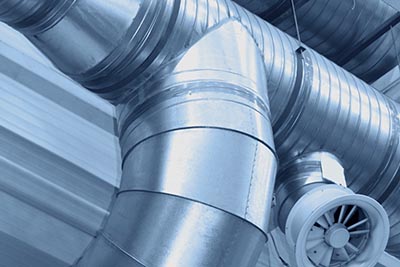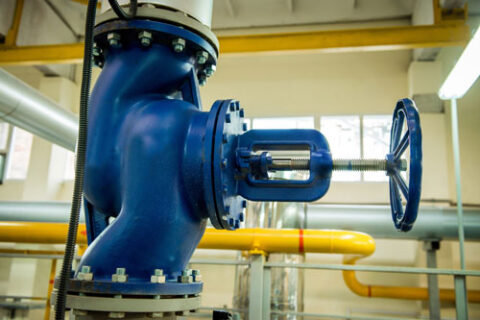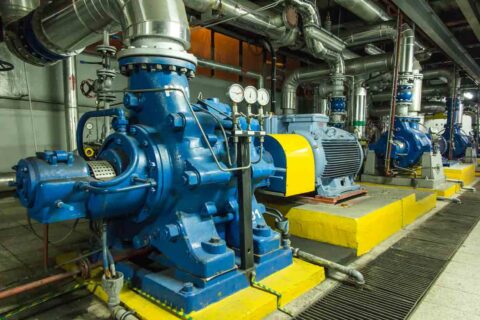Signs You Need To Repair or Replace Your Sewage Pump
Signs You Need A New Pump
Industrial pumps come in all types and designs. With that said, no industrial pump, no matter how well-made it is, is designed to last forever. With continual use, almost every pump will fail or at least run into issues at some point.
The key is to educate yourself and your workers on the warning signs of an impending pump failure. That way, you will all be aware when something is wrong, and you will be able to seek pump repair or replacement early on before there is a chance for any more severe damage to take place.
Sign #1: You’re Dealing With Dirty Water
To start off with, one of the first things to be on the lookout for is dirty water running through your systems.
The whole purpose of having a pump, no matter the exact type, is to regularly filter clean, clear water into your operations. When that isn’t happening and you’re getting dirty, murky water instead, it can take a serious toll on your business operations. Furthermore, it also indicates that something isn’t quite right with your pump.
Your best bet for determining what is causing the problem is to have a professional inspect your pump for you.
Sign #2: Your Pump Won’t Start Or Struggles To Start
Obviously, when your day-to-day operations rely on a working pump, it is a major problem if your pump won’t start. It is also an issue if it struggles or is slow to start.
There are a variety of reasons that this issue could pop up. It could be the result of anything from electrical problems to frayed wires to a blown fuse. It could also be the case that your pump has simply “given out.”
Instead of putting yourself or your workers at risk to try and figure out the problem, have professionals take a closer look.
Sign #3: Your Pump Is Constantly Cycling
Just about every type of industrial pump that you could ever purchase will cycle on and off; that is just how the vast majority of pumps work.
If, however, you find that your pump constantly seems to be cycling, so much so that you can never really determine what stage it is at or if it is doing its job properly, then you definitely have a problem of some sort on your hands.
The issue could be a poorly or improperly adjusted switch, a burnt-out motor, or issues communicating commands to turn on or off. As is the case with all of these problems, the best way to diagnose and properly fix the issue is with professional assistance and advice.
Sign #4: Your Pump Is Making Strange Sounds
Finally, as is the case with any type of machinery, especially one as all-important as a pump, if your pump suddenly starts making odd noises, it is definitely time to get it looked at.
You should especially be mindful of clanging or banging noises, which typically indicate either a problem with the overall mechanics of the pump or with its structure and integrity. However, any sounds that you don’t recognize or are not accustomed to should be cause for concern and action.
As you can see, your industrial pump will typically let you know when there is some kind of issue. It’s up to you, however, to notice the warning signs and to act fast if you do happen to notice one of these issues. Ignoring the problem is only going to make it worse and could lead to lasting damage.
If you’ve been experiencing any of these issues with your pump, contact the friendly experts at Simonds Machinery Company to get the problem taken care of as quickly as possible.

WHY DID YOUR HOME SEWER EJECTOR PUMP FAIL
In the modern, multi-level home, sewer ejector pumps make it possible to move the solid waste from drainage points through the septic lines and to the disposal area, whether it is a private septic tank or public sewer system. If you have a sewage ejector pump, you should get familiar with general maintenance needs and signs that the pump is not working properly.
While most sewage ejector pumps are designed to withstand at least 7 to 10 years of use, with some even lasting much longer, occasionally problems do arise long before the pump has reached the end of its life span. Here is a look at two of the most common reasons for premature sewage ejector pump failure.
Bypassing the Float Switch for Long Periods with Direct Power
Sewage ejector pumps have a float switch much like a sump pump, which means when fluid levels reach a point where the float of the unit rises to a certain level, the pump will automatically activate. Sometimes, the float switch will quit working, so homeowners will take the obvious route of bypassing the float switch by supplying the pump with direct power.
While bypassing the float switch temporarily is fine so you can eliminate waste in the holding vessel, this is not a long-term solution. The continuous power supply causes the pump’s motor to run nonstop. Therefore, the pump will burn out faster than it should if left connected to direct power. Instead, you should troubleshoot the float switch and find out why it’s not functioning.
A few of the most common reasons a float switch will stop working include:
- The float gets trapped so it cannot rise as it should
- The float gets weighted down by solid matter so it cannot float
- The float gets jammed due to debris around the switch housing
In most cases, float switch problems are an easy fix, so it is definitely not worth putting your entire sewage ejector pump in danger because you don’t fix the basic problem.
Ignoring Obstructed Discharge Lines While the Pump Runs Continuously
Clogs inside of septic lines can and do occur, and most of the time, your sewage ejector pump will be able to push the waste through the line by running a little longer. However, if you have a major backup of effluent and the pump is running continuously for a long time, it is best to shut off the pump and call a plumber because you likely have an obstruction in your sewage discharge lines.
Obstructions in a sewage discharge line can pose a threat to the life of your pump if they are so large or dense that the pump can’t push waste through. If you do not catch a clogged line right away, your pump will continue to run, which can cause overheating and motor failure with enough time.
Sewage ejector pumps are outfitted with alarms most of the time that are specifically designed to signal homeowners when the pump is overheating when a backup occurs, or even when the float switch is not functioning. However, it is not uncommon for the ejector pump’s alarm to not be properly hooked up during installation, especially if someone unfamiliar installed the pump.
To avoid putting stress on your ejector pump during discharge line clogs, make sure your alarm is functioning. You should also make an effort to check the pump on occasion for signs of an effluent backup or continuous pumping.
Understanding why sewer ejector pumps fail can help you as the property owner avoid costly problems down the road. If you are having issues with your sewage ejector pump, contact us at Simonds Machinery Company for pump service and repair.


